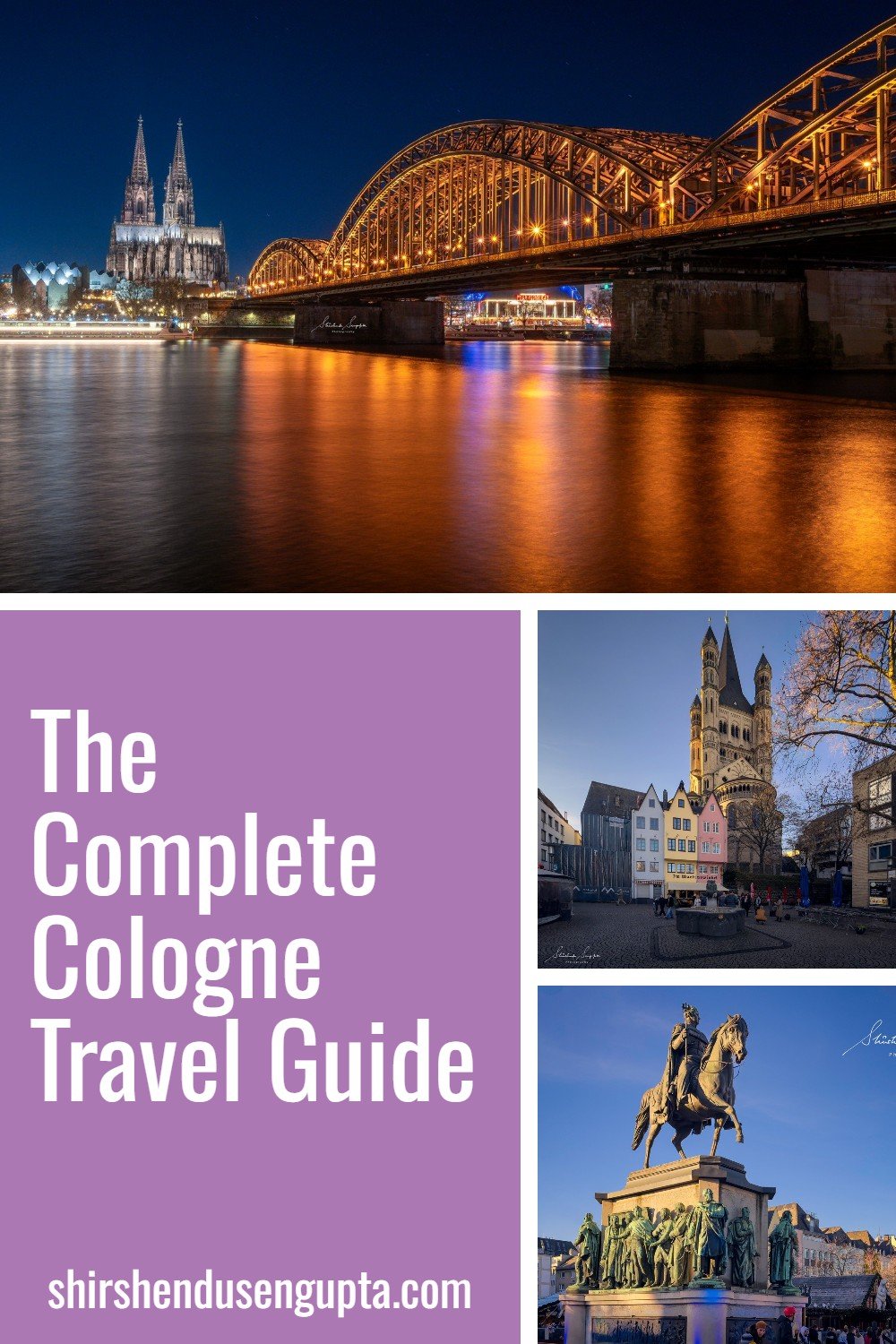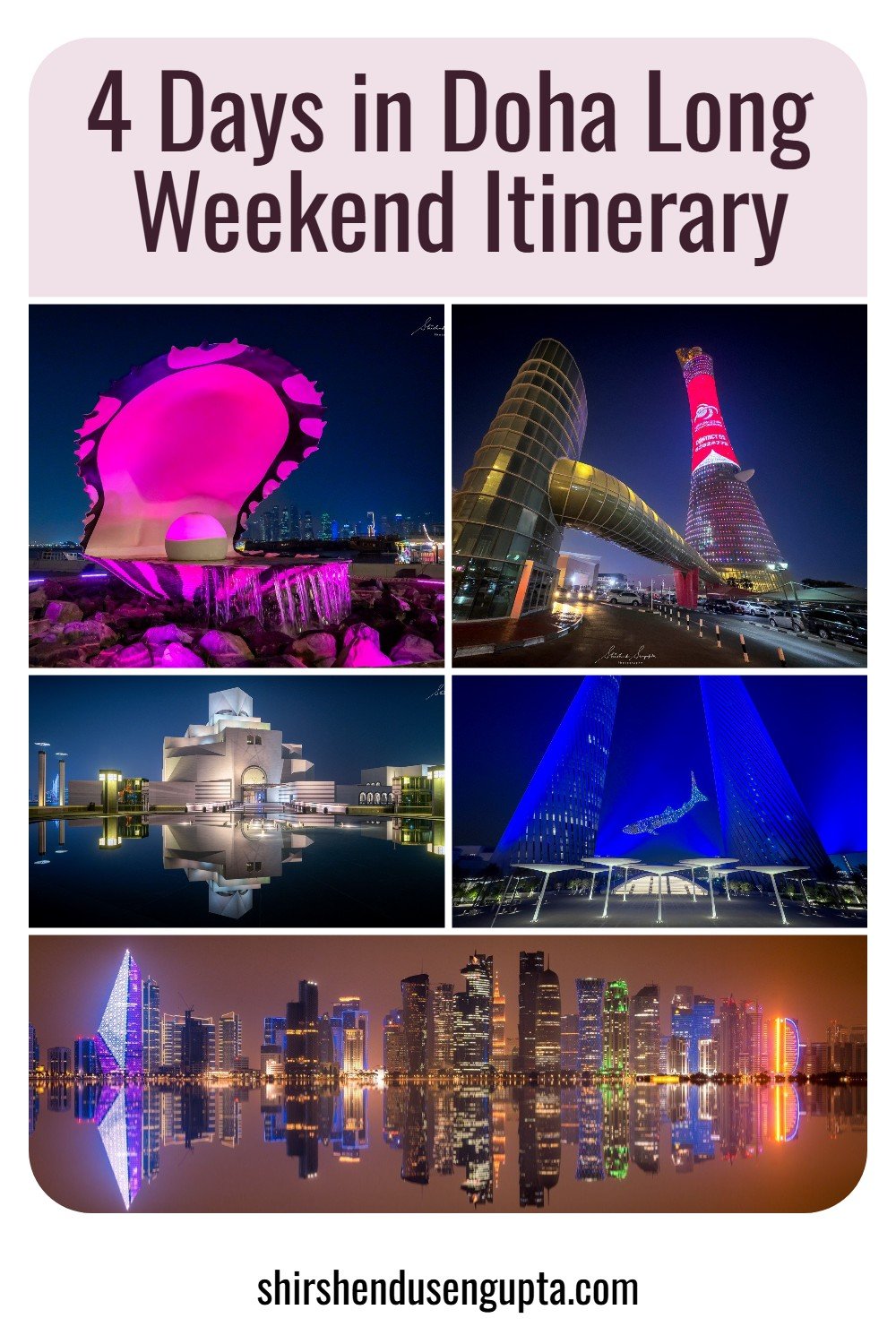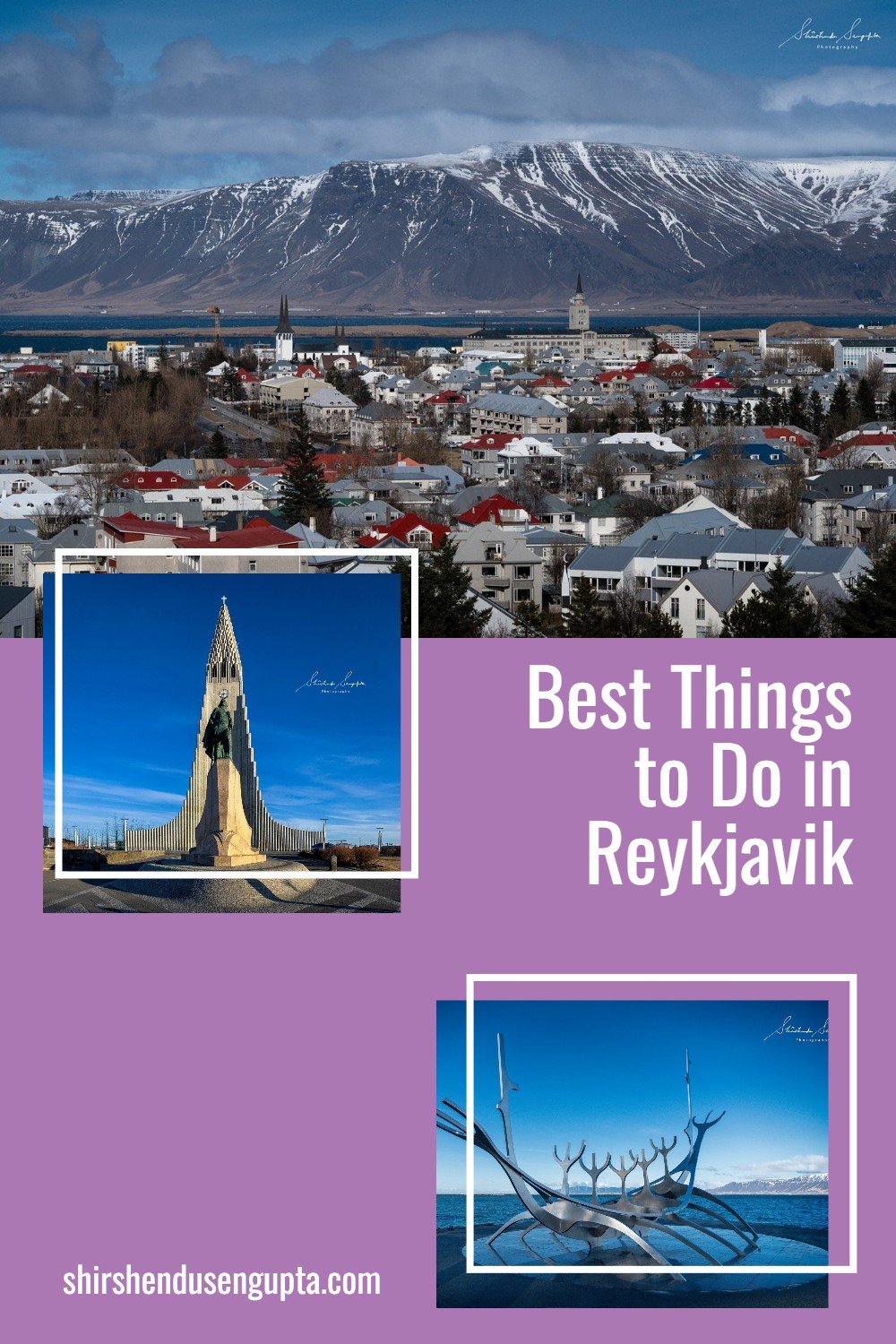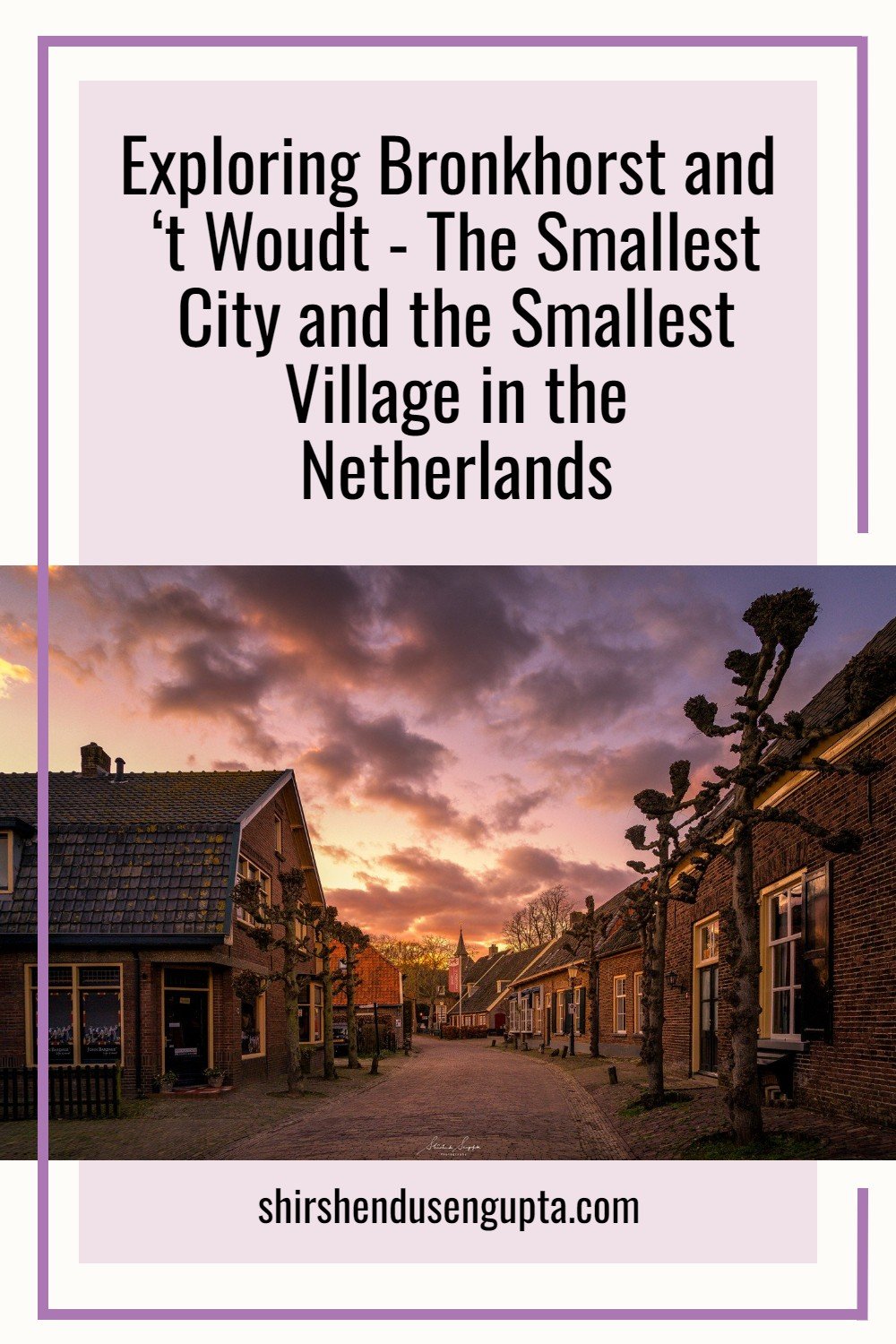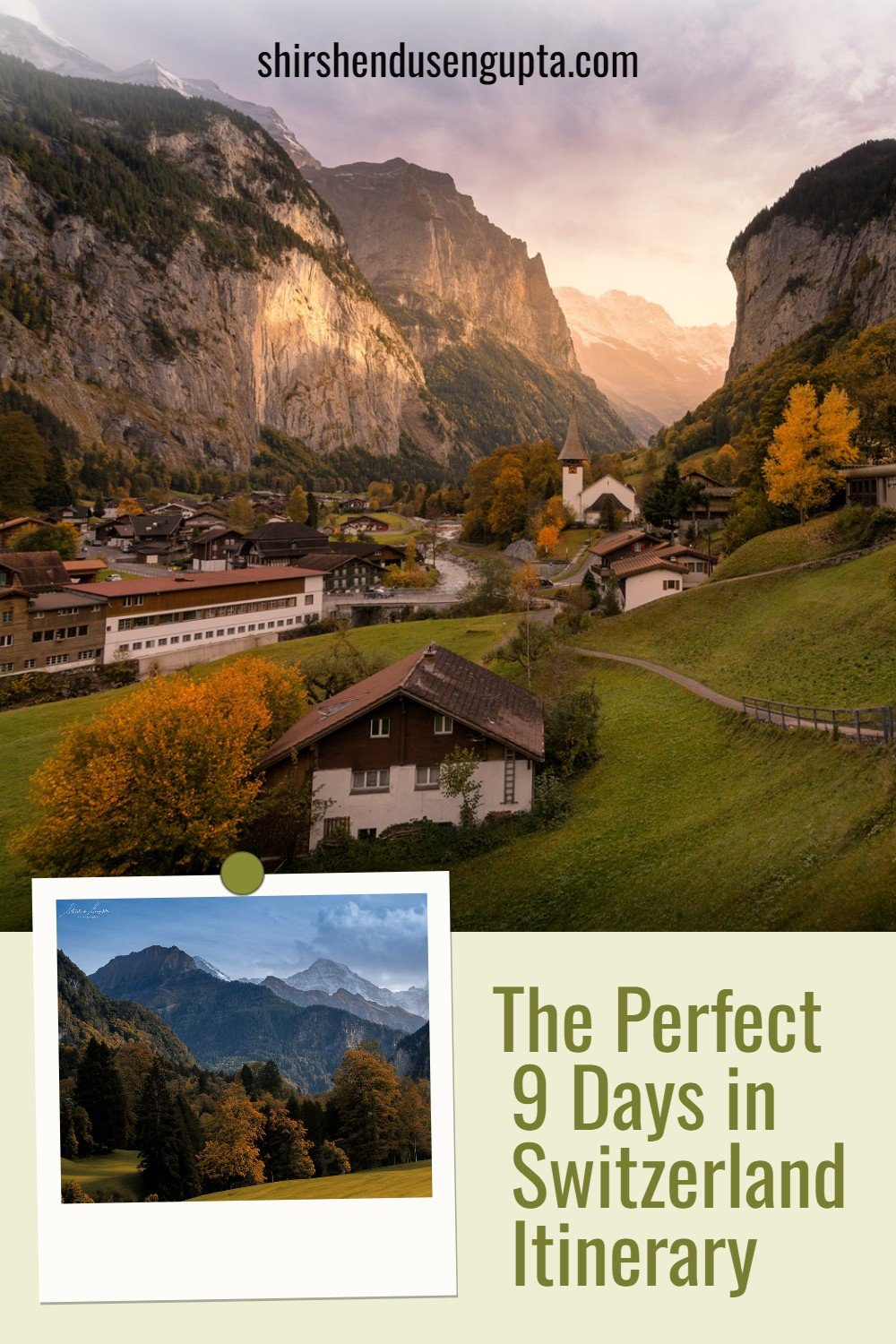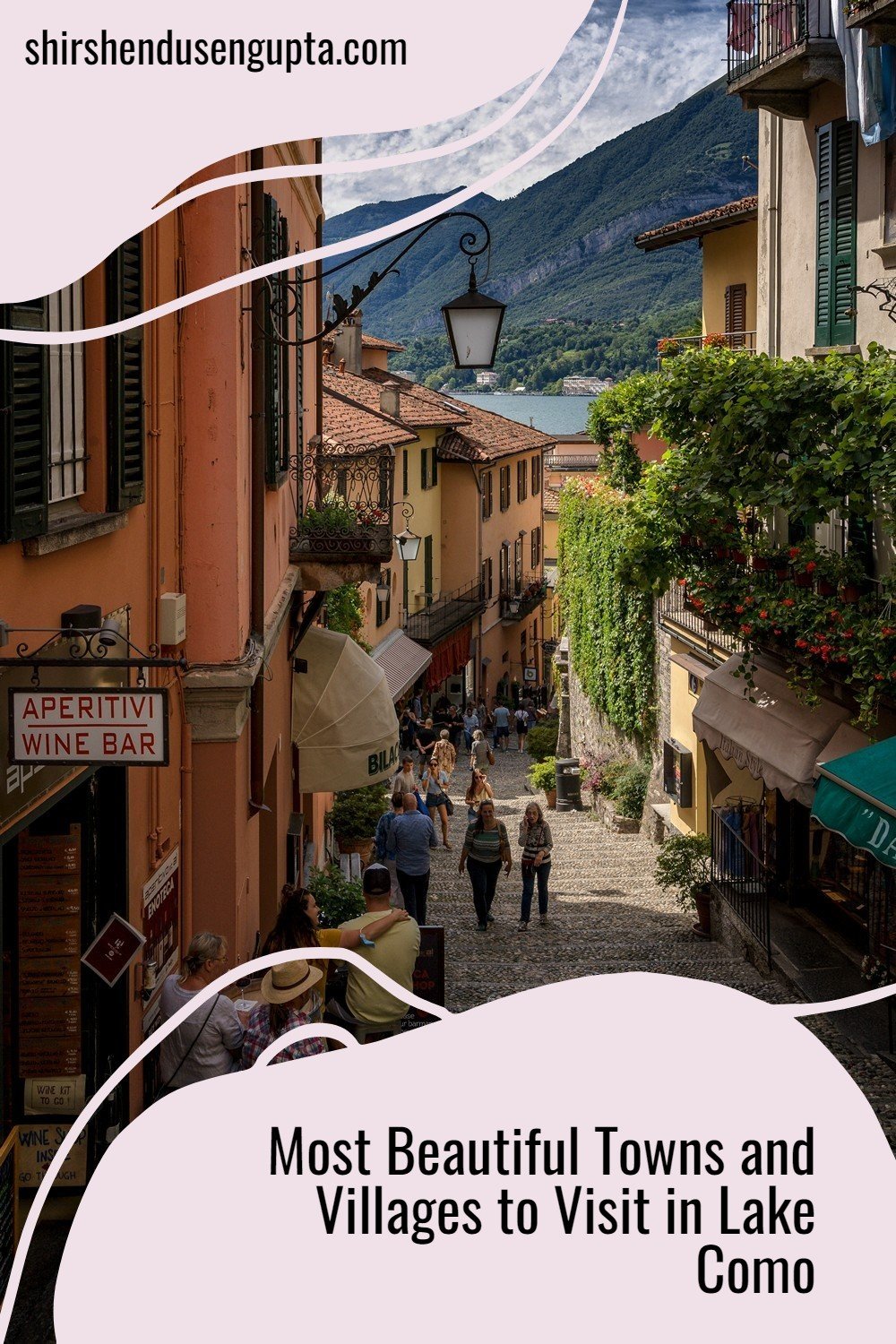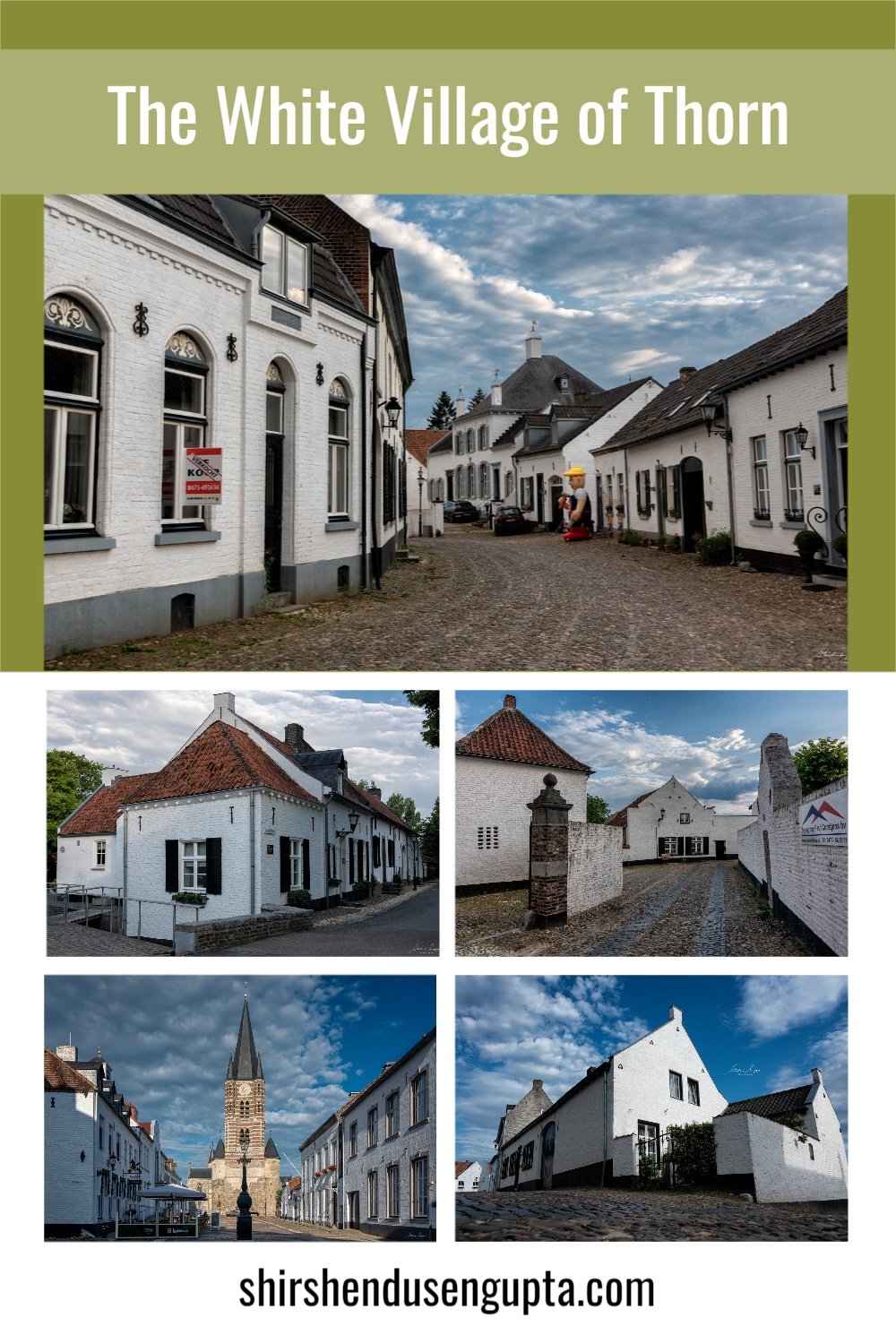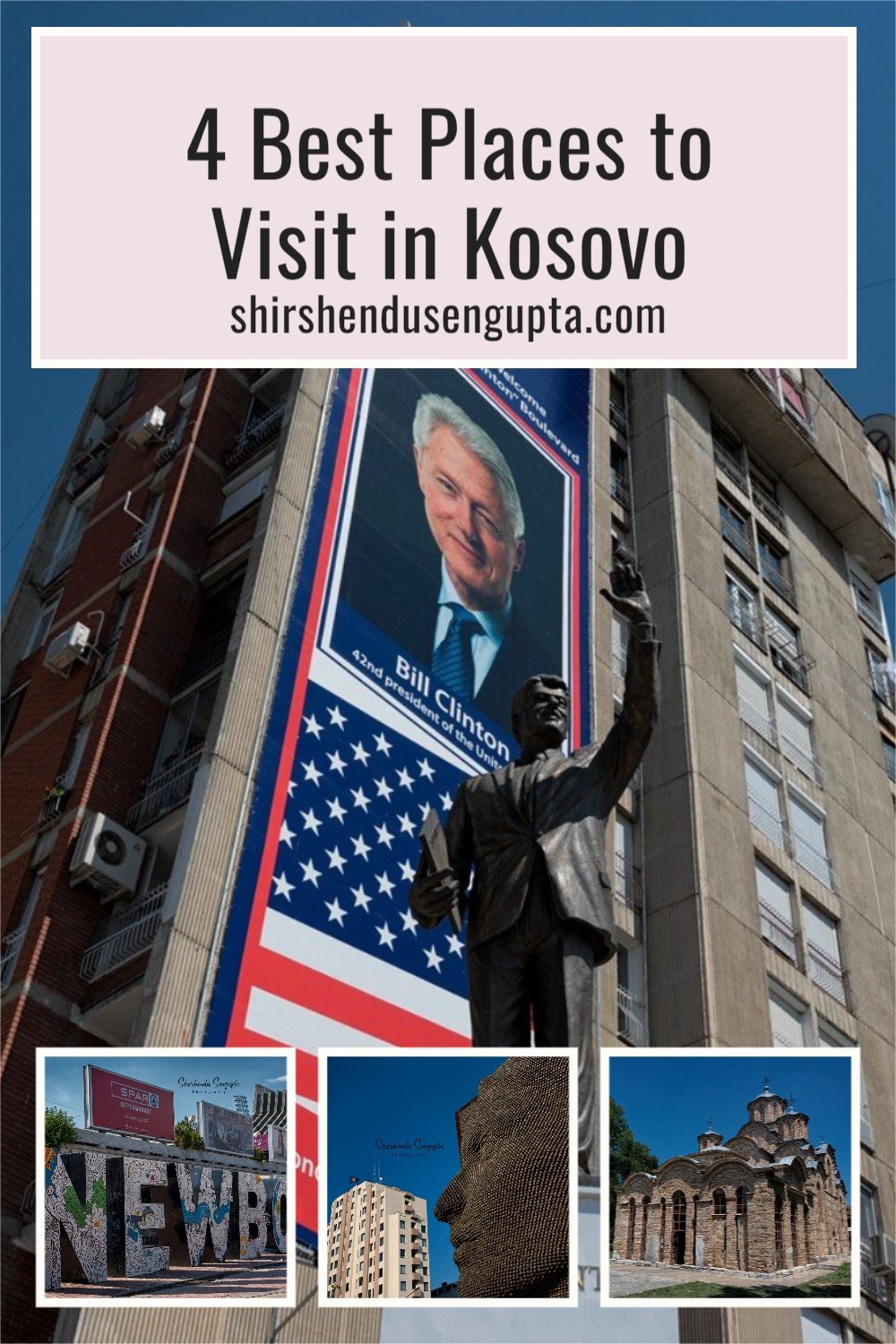16 Best Things to Do in Dublin | Top 16 Places to Visit and Must See Attractions in Dublin, Republic of Ireland, United Kingdom
Prologue
During a magical Christmas, we embarked on an unforgettable adventure, The British Isles in 2 Weeks | 4000 km Road Trip across Great Britain (England, Scotland, Wales) and Ireland (Republic of Ireland, Northern Ireland) from the Netherlands | Itinerary, Tips, and Tricks. What began as a simple plan soon turned into one of the most extraordinary journeys of our lives - a blend of coastal drives, medieval towns, misty castles, and heartwarming encounters that revealed the true soul of these storied isles. Every mile brought a new landscape, every turn whispered a new story, and every city left behind a piece of our hearts. So, based on our experience, today I’m going to take you along with me on a ride across the 16 best things to do in Dublin, the capital of the Republic of Ireland. Let the journey begin!
Welcome to the Republic of Ireland
Welcome to the Republic of Ireland, a country steeped in history, culture, and stunning natural beauty. Located on the island of Ireland, this independent nation has a rich heritage shaped by centuries of conflict, resilience, and transformation. The country’s early history is marked by the arrival of Celtic tribes around 500 BC, and it became an important center for early Christian monasticism during the 5th and 6th centuries. Over time, Ireland experienced Viking invasions and later, English colonization, leading to a long period of struggle for independence. The Republic of Ireland finally gained independence in 1922 following the Anglo-Irish Treaty, which ended centuries of British rule.
Today, the country celebrates its rich cultural traditions, from its folklore and music to its art and literature. Ireland is also known for its warm and welcoming people, and Dublin, its vibrant capital, stands as a testament to the country’s evolving identity. With a rich blend of old and new, Ireland offers visitors a unique journey through its storied past and lively present, where historical landmarks, natural landscapes, and a vibrant pub culture come together to create a truly unforgettable experience.
About Dublin
Dublin, the vibrant capital of the Republic of Ireland, is a city where history, culture, and modern energy blend seamlessly. Nestled on the banks of the River Liffey, Dublin is a city of storytellers, where every cobblestone street and historic building holds a tale from the past. Originally founded as a Viking settlement in the 9th century, it quickly grew into an important trading hub. By the 12th century, the city fell under Norman rule, which led to the construction of iconic medieval landmarks such as Dublin Castle and Christ Church Cathedral. In the following centuries, Dublin played a significant role in Ireland’s political and cultural evolution, such as the 1916 Easter Rising, which was a pivotal moment in Ireland’s fight for freedom from British rule.
Today, Dublin is a dynamic metropolis where the past and present coexist harmoniously. The city is famous for its literary legacy, having been home to renowned writers like James Joyce, W.B. Yeats, Samuel Beckett, and Oscar Wilde. Its grand Georgian architecture, medieval cathedrals, and centuries-old pubs tell the story of a city that has embraced change while preserving its rich heritage. Dublin is also a haven for music lovers, with traditional Irish tunes echoing from Temple Bar to Grafton Street. Whether you're exploring Trinity College’s famous Long Room Library, visiting Dublin Castle, or enjoying a pint of Guinness in its birthplace, the city offers an endless array of experiences. Warm, welcoming, and full of character, Dublin captivates visitors with its unique blend of history and contemporary charm, making it a must-visit destination for travelers from around the world.
16 Best Things to Do in Dublin
1. Walk across the Ha’penny Bridge
One of Dublin’s most recognizable landmarks, the Ha’penny Bridge is a stunning 19th-century pedestrian bridge that spans the River Liffey. Opened in 1816, it was the first dedicated footbridge in Dublin, replacing the ferries that had previously transported people across the river. The name “Ha’penny” originates from the half-penny toll that pedestrians had to pay to cross when the bridge first opened. Designed by John Windsor, the bridge was built from cast iron and manufactured in England before being assembled in Dublin. Over the years, the Ha’penny Bridge has become more than just a crossing point — it’s a symbol of Dublin’s charm and history.
Today, the bridge is a favorite spot for visitors and photographers, offering picturesque views of the River Liffey and the city’s skyline. It connects the lively Temple Bar district with the north side of Dublin, making it an essential stop for anyone exploring the city on foot. The bridge has undergone several renovations, including a major restoration in 2001, ensuring that its historic beauty remains intact. Whether you’re crossing it at sunset or seeing it illuminated at night, the Ha’penny Bridge remains one of the most romantic and iconic spots in Dublin.
2. Visit the Temple Bar Pub
No visit to Dublin is complete without experiencing the legendary Temple Bar Pub, the heart of the city’s nightlife and traditional Irish music scene. Dating back to 1840, this iconic pub has become a symbol of Dublin’s vibrant culture. While the entire Temple Bar district is known for its lively atmosphere, the Temple Bar Pub stands out as one of the most famous watering holes in the city. With its red-painted exterior, overflowing flower baskets, and bustling ambiance, it’s hard to miss.
Historically, the Temple Bar area was once a busy commercial hub in the 17th century, home to merchants and tradespeople. Over time, it evolved into a center for the arts and entertainment, and by the 20th century, it became Dublin’s go-to destination for live music, pubs, and nightlife. The Temple Bar Pub is particularly known for its extensive whiskey collection, traditional Irish folk music, and warm hospitality. Visitors can enjoy a pint of Guinness or Irish whiskey while listening to talented musicians perform classic ballads and lively jigs.
While the pub can get quite crowded, especially on weekends, it remains an essential experience for those wanting to soak in the true spirit of Dublin. Whether you’re looking for a night of entertainment or simply want to enjoy a drink in an authentic Irish setting, the Temple Bar Pub is a must-visit destination.
3. Visit the Irish Rock 'n' Roll Museum Experience
Dublin has long been a hub for music, and the Irish Rock 'n' Roll Museum Experience celebrates the city’s deep connection to the world of rock and pop. Located in Temple Bar, this interactive museum offers visitors an inside look at the studios where legendary Irish artists such as U2, Thin Lizzy, and Sinead O’Connor recorded some of their biggest hits. The museum, housed in a historic recording studio, allows visitors to step into a fully equipped rehearsal space, explore vintage guitars, and even record their own music. Dublin has played a crucial role in shaping the global rock scene, and this museum captures the spirit of its musical legacy. From iconic memorabilia to immersive exhibits that take visitors through the highs and lows of Ireland’s music history, it’s a must-visit for any music lover. The museum also pays tribute to the world-famous Irish Music Wall of Fame, featuring legends who put Irish music on the global map. Whether you're a die-hard rock fan or just curious about Ireland’s musical past, the Irish Rock 'n' Roll Museum Experience offers an unforgettable journey through Dublin’s rich and rebellious rock scene.
4. Click pictures of Molly Malone
The Molly Malone Statue is one of Dublin’s most famous landmarks, paying tribute to a figure immortalized in the song "Molly Malone." The ballad, also known as “Cockles and Mussels,” tells the tale of a beautiful fishmonger who roamed the streets of Dublin selling her wares before tragically dying young. While there is no concrete historical evidence of Molly Malone’s existence, the song has been embraced as Dublin’s unofficial anthem. The bronze statue, sculpted by Jeanne Rynhart, was unveiled in 1988 during Dublin’s millennium celebrations and originally stood on Grafton Street before being relocated to Suffolk Street.
Depicting Molly pushing a cart of seafood while dressed in a low-cut, 17th-century gown, the statue has gained notoriety for its somewhat provocative appearance, earning it playful nicknames like "The Tart with the Cart." Visitors often stop to take photos or rub the statue for good luck. Regardless of whether she was real or fictional, Molly Malone remains an integral part of Dublin’s folklore. The song is sung with pride during Irish celebrations and sporting events, ensuring that the legend of Molly Malone continues to live on.
5. Check out the Irish Whiskey Museum
Dublin has a long and proud history of whiskey-making, and the Irish Whiskey Museum provides a fascinating insight into Ireland’s signature spirit. Unlike the well-known Jameson Distillery, which focuses on a single brand, this museum offers a broader perspective on the evolution of Irish whiskey from the Middle Ages to the present day. Located near Trinity College, the museum takes visitors through the rise, fall, and revival of Ireland’s whiskey industry.
The 18th and 19th centuries saw Irish whiskey flourish, with Dublin at the heart of its production. However, the 20th century brought decline due to wars, prohibition in the U.S., and competition from Scotch whisky. In recent years, however, Irish whiskey has experienced a remarkable resurgence, with Dublin once again at the forefront. The museum’s interactive tours allow visitors to explore old whiskey advertisements, learn about the distillation process, and, of course, sample different varieties of whiskey. With expert guides offering whiskey tastings tailored to different palates, it’s the perfect experience for both connoisseurs and casual drinkers. If you want to appreciate the rich heritage of Irish whiskey, a visit to the Irish Whiskey Museum is a must.
6. Explore the Trinity College
Trinity College Dublin, Ireland’s most prestigious university, is a historic and intellectual landmark in the heart of the city. Founded in 1592 by Queen Elizabeth I, it was established as a center of learning modeled after Oxford and Cambridge. Originally an institution for the Protestant elite, Trinity gradually became more inclusive and is now open to students from all backgrounds.
The university’s Old Library is famous for housing the Book of Kells, an exquisitely illustrated medieval manuscript dating back to c. 800 AD. This masterpiece, created by Celtic monks, is written in Latin and contains the four Gospels of the New Testament. The library itself is a sight to behold, particularly its Long Room, an awe-inspiring hall lined with thousands of rare books and marble busts of great thinkers.
Trinity College’s campus is also a place of architectural beauty, with its elegant Georgian buildings, cobbled squares, and manicured gardens offering a tranquil retreat from the bustling city. Walking through its historic courtyards, you can feel the presence of Ireland’s greatest minds, from Oscar Wilde to Samuel Beckett, who once roamed these halls. A visit to Trinity College is essential for anyone interested in history, literature, and academia.
7. Tour the Oscar Wilde House
The Oscar Wilde House, located at No. 1 Merrion Square, is a place of literary pilgrimage in Dublin. It was here, in this elegant Georgian townhouse, that the famous playwright and poet Oscar Wilde spent his early years before becoming one of Ireland’s most celebrated literary figures. Wilde, known for his wit and sharp social critiques, wrote classics such as The Picture of Dorian Gray and The Importance of Being Earnest.
Built in the 18th century, the house is a fine example of Georgian architecture, featuring large sash windows, high ceilings, and ornate stucco detailing. Wilde’s parents were both influential figures — his father, Sir William Wilde, was a prominent surgeon, while his mother, Jane Wilde, was a nationalist poet. The house has since been restored and now serves as a cultural and educational center, offering guided tours that provide insight into Wilde’s fascinating life and literary achievements. Merrion Square, where the house is located, was a hub for Dublin’s intellectual elite, and the surrounding area remains one of the city’s most picturesque spots. For literature lovers, visiting Oscar Wilde’s childhood home is an essential stop in understanding the life of one of Dublin’s greatest literary icons.
8. Admire the Oscar Wilde Monument opposite to the Oscar Wilde House
Just across from the Oscar Wilde House, nestled in Merrion Square Park, stands the striking Oscar Wilde Monument, a tribute to one of Ireland’s most legendary writers. Designed by sculptor Danny Osborne, this unique statue was unveiled in 1997 and presents Wilde reclining on a large quartz rock, grinning mischievously. The statue is notable for its green and pink coloring, reflecting Wilde’s flamboyant personality. Surrounding the statue are two stone pillars inscribed with Wilde’s most famous quotes, showcasing his sharp wit and timeless observations on society.
Merrion Square was a significant part of Wilde’s childhood, as he grew up in the townhouse directly across from the park. The square itself is a beautiful example of Georgian Dublin, once home to famous figures such as W.B. Yeats and Daniel O’Connell. The Oscar Wilde Monument captures not only the spirit of the writer but also Dublin’s deep literary heritage. Many visitors stop here to reflect on Wilde’s legacy or to take photos with the statue, which humorously smirks back at onlookers. Whether you admire his works or simply appreciate his impact on Irish culture, the monument is a fitting tribute to Dublin’s most celebrated wit.
9. Visit the National Gallery of Ireland
For art lovers, the National Gallery of Ireland is a treasure trove of artistic masterpieces spanning centuries. Founded in 1864, the gallery is home to an impressive collection of over 16,000 artworks, including works by Caravaggio, Vermeer, and Rembrandt, as well as celebrated Irish painters such as Jack B. Yeats.
The gallery’s creation was part of Dublin’s cultural expansion in the 19th century, aimed at providing public access to fine art. Over the years, it has undergone multiple expansions, most recently in 2017, to create modern exhibition spaces while preserving its Victorian-era charm. One of its most famous pieces is Caravaggio’s ‘The Taking of Christ’, a dramatic Baroque masterpiece rediscovered in Dublin in the 1990s.
Located near Merrion Square, the National Gallery offers free admission, making it a must-visit for those looking to immerse themselves in the artistic heritage of Ireland and beyond. With an extensive collection of Renaissance, Baroque, and modern Irish art, along with special exhibitions and educational programs, the gallery provides an enriching experience for both casual visitors and art aficionados. Whether you spend an hour or an afternoon, it’s a cultural highlight in the heart of Dublin.
10. Drop by at the National Museum of Ireland – Archaeology
History enthusiasts will be fascinated by the National Museum of Ireland – Archaeology, which houses some of the country’s most significant historical artifacts. Opened in 1890, this museum takes visitors on a journey through Ireland’s ancient past, from prehistoric times to the Viking and medieval periods.
One of the most famous exhibits is the Bog Bodies, remarkably preserved human remains dating back to the Iron Age, discovered in Ireland’s peat bogs. The museum also boasts an impressive collection of Celtic gold artifacts, including the Tara Brooch and the Ardagh Chalice, which showcase the exquisite craftsmanship of early Irish metalwork.
The museum’s Viking Dublin exhibit offers a glimpse into the city’s Norse history, displaying swords, tools, and everyday objects from the Viking Age. Located on Kildare Street, the building itself is an architectural masterpiece, featuring a stunning domed ceiling and mosaic floors. As the leading institution for Irish archaeology, the museum offers an unparalleled insight into the ancient civilizations that shaped Ireland. Best of all, admission is free, making it an essential stop for anyone interested in the rich and mysterious history of Dublin.
11. Go for leisure shopping at the Grafton Street
One of Dublin’s most famous streets, Grafton Street, is the beating heart of the city’s shopping and cultural scene. Stretching from St. Stephen’s Green to Trinity College, this vibrant pedestrianized street is lined with boutiques, cafés, and street performers, making it a lively place to soak up the energy of Dublin.
Historically, Grafton Street dates back to the 18th century, when it developed as an upscale shopping district catering to Dublin’s wealthy residents. Over the years, it has retained its charm, becoming home to iconic Irish brands like Brown Thomas and international names. The street is also famous for its buskers, who range from classical musicians to modern pop singers. Even Ed Sheeran and Damien Rice once performed here before rising to fame.
Perhaps the most famous spot on Grafton Street is Bewley’s Oriental Café, which has been serving Dubliners since 1927. Its beautifully restored interior and rich coffee culture make it a great place to relax. Whether you’re shopping, listening to street musicians, or enjoying a leisurely stroll, Grafton Street offers an authentic Dublin experience filled with history, music, and local charm.
12. Visit St. Ann's Church of Ireland
St. Ann’s Church, located on Dawson Street, is a hidden gem in Dublin, known for its beautiful architecture and rich historical connections. Built in 1720, this Church of Ireland parish church has stood the test of time, witnessing Dublin’s transformation over the centuries.
One of the most notable traditions at St. Ann’s is the Food Appeal Ledger, which dates back to the 19th century. This book records donations made to help feed the poor, a tradition that continues today. Visitors can see the historic ledger and even contribute to the ongoing charity efforts.
St. Ann’s is also famous for its connection to literary figures. It was here that Bram Stoker, the author of Dracula, married his wife, Florence Balcombe, in 1878. The church’s elegant Georgian façade, along with its stained-glass windows and peaceful interior, makes it a must-visit for history and architecture lovers. Whether you’re drawn by its history, its role in Dublin’s social work, or simply its peaceful atmosphere, St. Ann’s Church offers a quiet escape from the bustling city streets.
13. Stop by at the Dublin City Hall
A striking example of Georgian architecture, Dublin City Hall is one of the most impressive civic buildings in Ireland. Originally built in the 18th century as the Royal Exchange, it was designed by the celebrated architect Thomas Cooley. The building was used by merchants for business transactions before becoming the seat of the Dublin City Council in the 1850s.
One of the most remarkable features of Dublin City Hall is its rotunda, a grand circular hall with a stunning painted dome and towering columns. The rotunda is adorned with intricate mosaic floors and statues depicting Ireland’s rich history. The building also played a role in the 1916 Easter Rising, when rebels took over City Hall in their bid for Irish independence.
Today, Dublin City Hall is open to visitors, offering an engaging exhibition on Dublin’s history, detailing its evolution from Viking settlement to modern European capital. Whether you’re interested in architecture, history, or politics, this beautifully preserved landmark is a fascinating stop that provides deep insight into Dublin’s past.
14. Visit the Christ Church Cathedral
One of Dublin’s oldest and most significant religious sites, Christ Church Cathedral, has stood at the heart of the city for nearly 1,000 years. Founded in 1030 by the Norse King Sitric Silkenbeard, the cathedral has witnessed centuries of change, from Viking rule to Norman conquest and beyond.
Originally built as a simple wooden church, Christ Church was later reconstructed in stone by the Normans in the 12th century, incorporating magnificent Gothic and Romanesque architectural styles. One of the cathedral’s most fascinating features is its crypt, which is one of the largest in Ireland and contains medieval relics, historic documents, and even a mummified cat and rat, famously known as Tom & Jerry.
Christ Church also played a key role in the Anglo-Irish Treaty negotiations, with British officials meeting here during crucial moments in Irish history. Today, visitors can admire its stained-glass windows, medieval tiles, and grand vaulted ceilings while learning about its rich past. Whether attending a choral performance or simply soaking in its historical atmosphere, Christ Church Cathedral is an unmissable landmark in Dublin.
15. Visit the St. Patrick’s Cathedral
As Ireland’s largest cathedral, St. Patrick’s Cathedral is an awe-inspiring monument to Dublin’s spiritual and architectural history. Founded in 1191, the cathedral stands on the site where St. Patrick himself is said to have baptized converts to Christianity in the 5th century.
During the medieval period, St. Patrick’s became a center for religious and political life, and by the 18th century, it had a surprising connection to literature. The famous satirist Jonathan Swift, author of Gulliver’s Travels, served as the cathedral’s dean from 1713 to 1745. His grave and a memorial to his work can still be seen inside.
One of the most striking features of St. Patrick’s is its imposing Gothic architecture, complete with a stunning spire, intricate stone carvings, and a majestic choir. The cathedral also hosts regular choral performances, continuing its long tradition of music and worship. Surrounding the cathedral is St. Patrick’s Park, a beautifully landscaped green space perfect for reflection. A visit here offers not just a spiritual experience but also a chance to immerse yourself in Dublin’s medieval past.
16. Explore the Dublin Castle
No visit to Dublin is complete without exploring Dublin Castle, a historic fortress that has stood as the seat of British and Irish power for over 800 years. Originally built in 1204 by order of King John of England, the castle served as the center of English administration in Ireland until 1922, when it was handed over to the newly formed Irish government.
The castle has witnessed key moments in history, from Viking raids to the Easter Rising of 1916. Though much of the medieval castle was destroyed by fire, the surviving Record Tower remains one of the oldest buildings in Dublin, dating back to the 13th century. Today, visitors can explore the State Apartments, used for ceremonial events, and the Chapel Royal, which boasts beautiful stained-glass windows.
Dublin Castle also houses the Chester Beatty Library, a world-renowned collection of manuscripts, books, and art from around the globe. Whether you're interested in Irish history, architecture, or politics, Dublin Castle offers a fascinating glimpse into the city’s storied past.
Visiting Dublin
Best Time to Visit: Dublin is a great year-round destination, but the best time to visit depends on your preferences. Spring (March to May) and autumn (September to November) offer mild weather, fewer crowds, and lower hotel rates. Summer (June to August) is the peak season, with lively festivals, long days, and plenty of outdoor activities, but it also brings larger crowds. For those seeking a magical experience, Christmas in Dublin is unforgettable. The city is beautifully decorated with festive lights, Christmas markets, and special holiday events, making it a perfect time for a winter getaway. We traveed to Dublin during Christmas.
Number of Days to Stay: A 3 to 4-day trip is ideal for exploring Dublin, offering enough time to visit major attractions like Trinity College, Dublin Castle, and St. Patrick’s Cathedral. You can also enjoy the city’s vibrant nightlife and explore its charming streets and neighborhoods. For those with limited time, a 2-day visit focusing on the main landmarks is a great option.
Best Place to Stay: Dublin offers a wide range of accommodations, from luxury hotels to budget-friendly hostels. For a central location, staying in areas like Parnell Street, Temple Bar, Grafton Street, or St. Stephen’s Green are ideal. The Shelbourne and The Westbury are perfect for a luxurious stay, while The Clarence offers stylish, boutique accommodations. During the festive season, make sure to book early as Dublin’s hotels tend to fill up quickly with holiday travelers. We stayed on Parnell Street.
Best Way to Arrive: The most convenient way to arrive in Dublin is by air, landing at Dublin Airport, which is just 10 km from the city center. Dublin Airport is well-connected to Europe, North America, and Asia. Upon arrival, you can take an Aircoach or Dublin Express bus to the city center in about 20-30 minutes. If traveling from the UK, ferries from Holyhead or Liverpool provide a scenic option. For those coming from within Ireland, Irish Rail trains and long-distance buses offer comfortable transport to Dublin. We sailed to Dublin from Holyhead along with our car.
Best Local Mode of Conveyance: Dublin’s compact city center makes it easy to explore on foot. However, if you want to cover more ground, the DART (Dublin Area Rapid Transit) train is the fastest way to get to coastal areas like Howth and Bray. The LUAS (tram system) is another great option, with two lines that cover major parts of the city. For a more convenient option, Dublin Bus operates throughout the city. Alternatively, you can use Dublin Bikes, a fun and eco-friendly way to explore the city, especially during the warmer months.
Epilogue
So that brings us to the end of our journey across the 16 best things to do in Dublin. Please let us know in the comments below if you enjoyed reading this article.
And if you want to read the day-by-day account of our 4000 km road run across all countries of the British Isles during Christmas, please visit our article The British Isles in 2 Weeks | 4000 km Road Trip across Great Britain (England, Scotland, Wales) and Ireland (Republic of Ireland, Northern Ireland) from the Netherlands | Itinerary, Tips, and Tricks. Until then, merry traveling and happy shooting!
Pin the article
Bookmark the article for reading later!
Want to license/buy photos in the article?
License photos for commercial/editorial use or buy photo prints!
Want us to write an article for you?
Articles for magazines, newspapers, and websites!
Watch our Videos
Check out our videos on our Youtube Channel!
Join the Newsletter
Get updates on our latest articles!
We respect your privacy. Read our policy here.

















